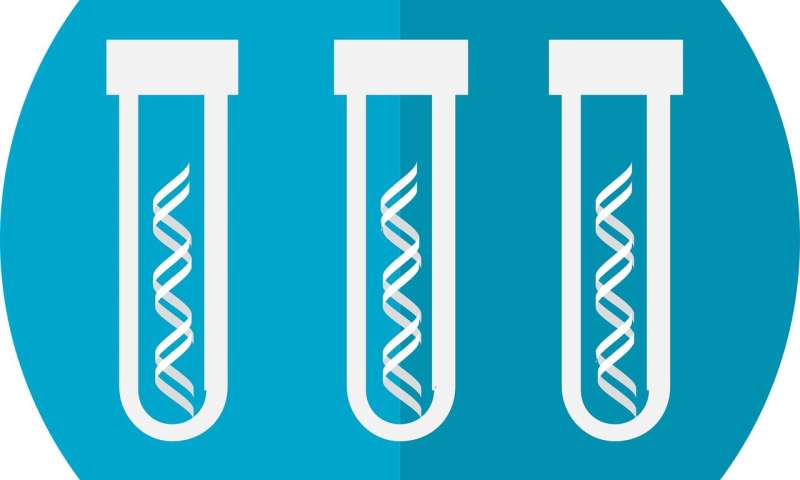
The industry around do-it-yourself DNA kits has exploded, with tens of millions of people sending in samples to learn about their family history. But what consumers might consider a lighthearted glimpse into their backgrounds gave Penn sociologist Wendy Roth pause.
“When I first heard about genetic ancestry tests, I was concerned. As social scientists, we learn that race is not genetic; it’s not biological,” Roth says. “What are these tests that take a DNA sample and report back your race? In the early days, that’s how it was being described. They were selling themselves as providing you with the definitive word on your race, ethnicity, and who you are.”
Roth and others in the field grew worried that the test results might inadvertently reshape racial boundaries and reinforce an archaic concept called genetic essentialism, which says that genes alone determine race, and that race alone determines a person’s abilities. “Even before there was any data, social scientists were writing think pieces, saying these tests were going to revive this harmful view,” she says. “I shared those concerns, but I wanted to answer this question empirically.”
The result of that work is laid out in a new paper Roth published in PLOS ONE with colleagues Sule Yaylaci, Kaitlyn Jaffe, and Lindsey Richardson from the University of British Columbia and the British Columbia Centre on Substance Use. The researchers found that overall, DIY DNA tests did not lead more people to believe that race is purely genetic, but they also learned that genetic tests influence people differently.
“For some, it increases their belief in racial essentialism and for others, it decreases that belief. That’s causing the effect to average out,” says Roth. “What seems to make the biggest difference is how much someone understands about genetics going in.”
People who better grasped genetics initially came away from the test more skeptical of this racial construct than when they started. Those who understood genetics less believed in essentialism more following the test. “It really seems to be a polarization,” she says. For “the people who don’t understand genetics going into this, their views become more extreme. They take more of a layperson’s understanding of what a test like this is able to say. They take it at face value.”
Roth had previously conducted qualitative interviews with people who had bought genetic-ancestry tests, which helped her grasp their understanding of their test results. But interviewing people as they received results didn’t allow Roth to rigorously analyze the causal effects of such tests. To do this, she designed a randomized control trial focused on non-Hispanic, native-born white Americans.
The study population of 802 people had also never before taken a genetic-ancestry test, had no family results from such a test, and, perhaps most crucial, were amenable to taking one. “That’s important,” she says. “This isn’t a sample of all whites, or even all non-Hispanic, native-born whites. It really is a sample of people willing to take these tests.”
All participants began the process by completing a survey to assess their understanding of the relationship between genes and race. Roth then randomly assigned participants to a control or treatment group. The former took no tests. Those in the latter took two DNA tests, one called an admixture test, which presents a person’s background as a pie chart of different ancestries, and a second that follows maternal lineage back thousands of years, tracing a family’s migration path around the globe. About eight weeks later, Roth asked these participants to review their results for at least 30 minutes, then take a first-reaction survey. Finally, 11 months after taking the pre-test survey, all participants answered follow-up questions that again asked about their understanding of the link between genetics and race.
“Based on those questions, my co-authors and I developed a scale to measure belief in genetic essentialism of race, that your genes determine which racial category you belong to and these are discrete, not overlapping: You are black or white or Asian. It’s also a belief that those racial groups determined by your genes determine your abilities, how smart you are, how athletic you are, how good you are at math,” Roth explains. “I compared the treatment and the control groups in the pre- and post-test surveys.”
According to Roth, the study findings have important implications for the DIY DNA testing industry and for the people who use these kits. Consumers need to understand the limitations of the tests, she says, and to that end, the companies who provide them need to make those limitations clear. “There are people out there buying these tests for fun, as a lark,” she says. “They’re not really thinking about the kind of impact that they could have, either on themselves or on people they know.”
The tests could inadvertently fuel negative or hurtful behavior, too, she adds. “We know that attitudes affect behaviors all the time, from voting to social ties to hostility toward neighbors. I don’t want to make too much of a logical leap here, but there’s a general concern with negative racial animus being on the rise, that it’s being permitted. The fact that something that seems harmless like a genetic-ancestry test could be potentially fueling those views is concerning.”
Source: Read Full Article